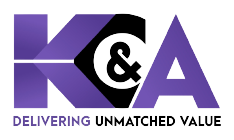As a business owner, you know that investing in research and development is essential for staying ahead of the competition and driving growth. The good news is that the Internal Revenue Service (IRS) provides two tax incentives to help support these activities: Section 174 expenses and the Research and Development (R&D) Tax Credit. In this article, we will explore the interplay between Section 174 and the R&D Tax Credit and how your business can maximize the benefits of both.
Section 174 Expenses
Section 174 expenses are costs incurred in connection with research and experimental activities, such as wages paid to employees involved in R&D, materials used in experimentation, and laboratory equipment. To be eligible for the Section 174 deduction, expenses must meet certain requirements, including being directly related to R&D activities, incurred in the process of determining the success of the activities, and not related to the production of income.
Research and Development Tax Credit
The R&D Tax Credit is a federal tax credit that rewards businesses for investing in qualified R&D activities. The credit is equal to a percentage of the qualified R&D expenses, and it can be used to offset the company’s federal tax liability. To be eligible for the R&D Tax Credit, a company must have expenses related to developing or improving a product, process, or technique, and the activities must be technological in nature and substantially rely on principles of the hard sciences.
Interplay between Section 174 and the R&D Tax Credit
Both Section 174 expenses and the R&D Tax Credit provide benefits to businesses that invest in R&D activities. However, it is important to understand the differences between the two incentives and how they can be used together to maximize benefits.
One key difference is that the R&D Tax Credit applies to a broader range of activities and expenses than Section 174. For example, while Section 174 only applies to expenses incurred in the process of determining the success of the activities, the R&D Tax Credit applies to expenses incurred throughout the entire R&D process. This means that a business can potentially claim both the Section 174 deduction and the R&D Tax Credit for the same expenses.
Another difference is that the R&D Tax Credit provides a tax credit, which is a dollar-for-dollar reduction in tax liability, while the Section 174 deduction only reduces taxable income. This means that the R&D Tax Credit can provide a greater benefit for businesses with a high tax liability.
Maximizing Benefits
To maximize the benefits of both Section 174 and the R&D Tax Credit, it is important to have a thorough understanding of the requirements and limitations of each incentive. A tax professional can help you identify eligible expenses and ensure that you are claiming all of the benefits to which your business is entitled.
In addition, it is important to keep detailed records of all R&D expenses, including receipts and invoices, to support your claims in the event of an audit. This will help ensure that you are able to take full advantage of the benefits of both Section 174 and the R&D Tax Credit.
To conclude, Section 174 expenses and the R&D Tax Credit are two valuable tax incentives for businesses that invest in R&D activities. By understanding the differences between the two incentives and how they can be used together, you can maximize the benefits and lower your tax bill, freeing up funds to invest in the growth and success of your business.
Contact KC&A today to assist in maximizing your R&D claim in addition to navigating the nuances and complexities associated with Section 174!


